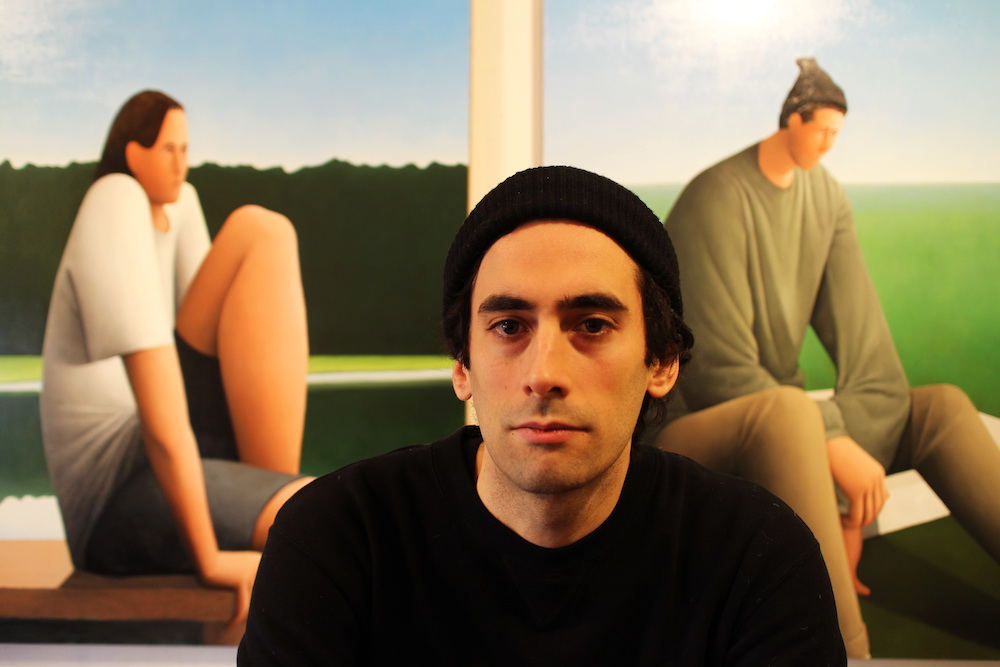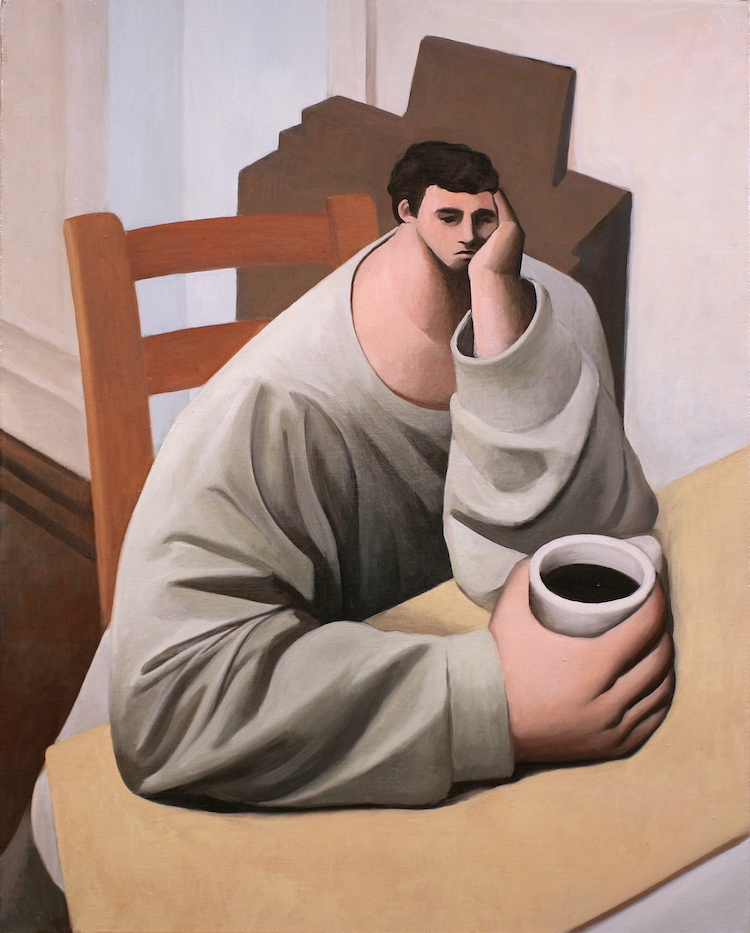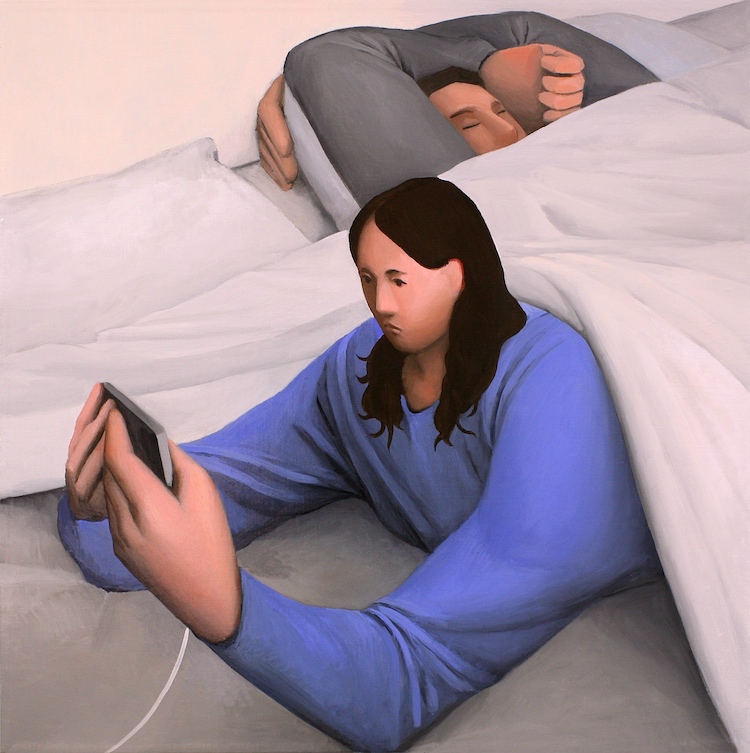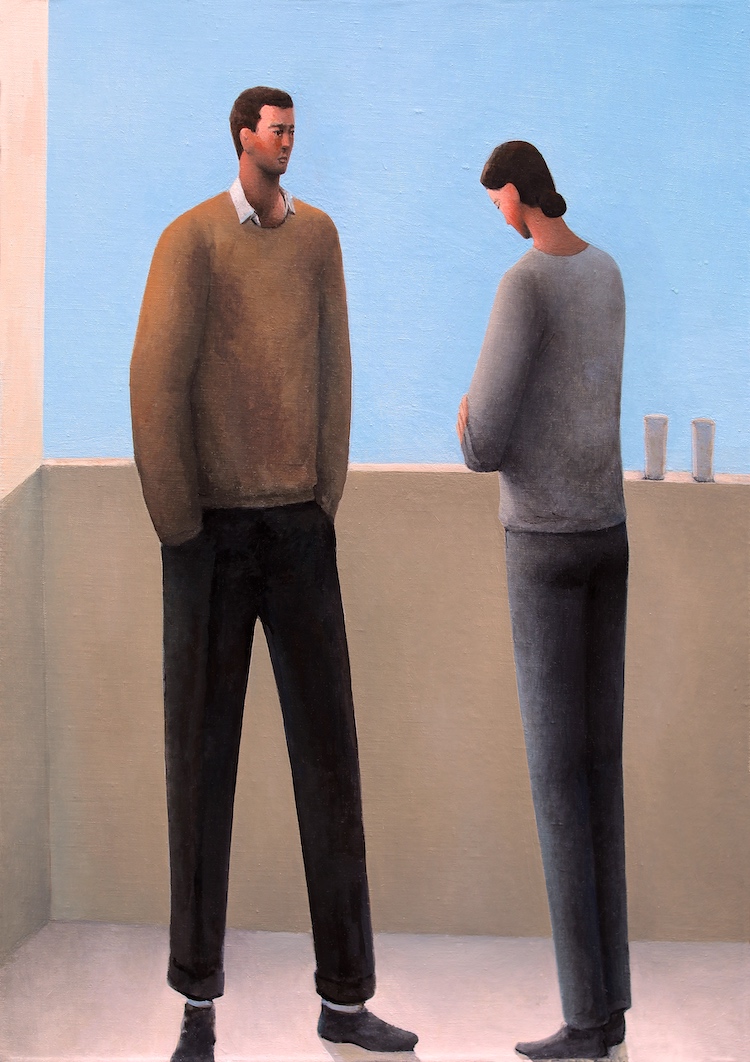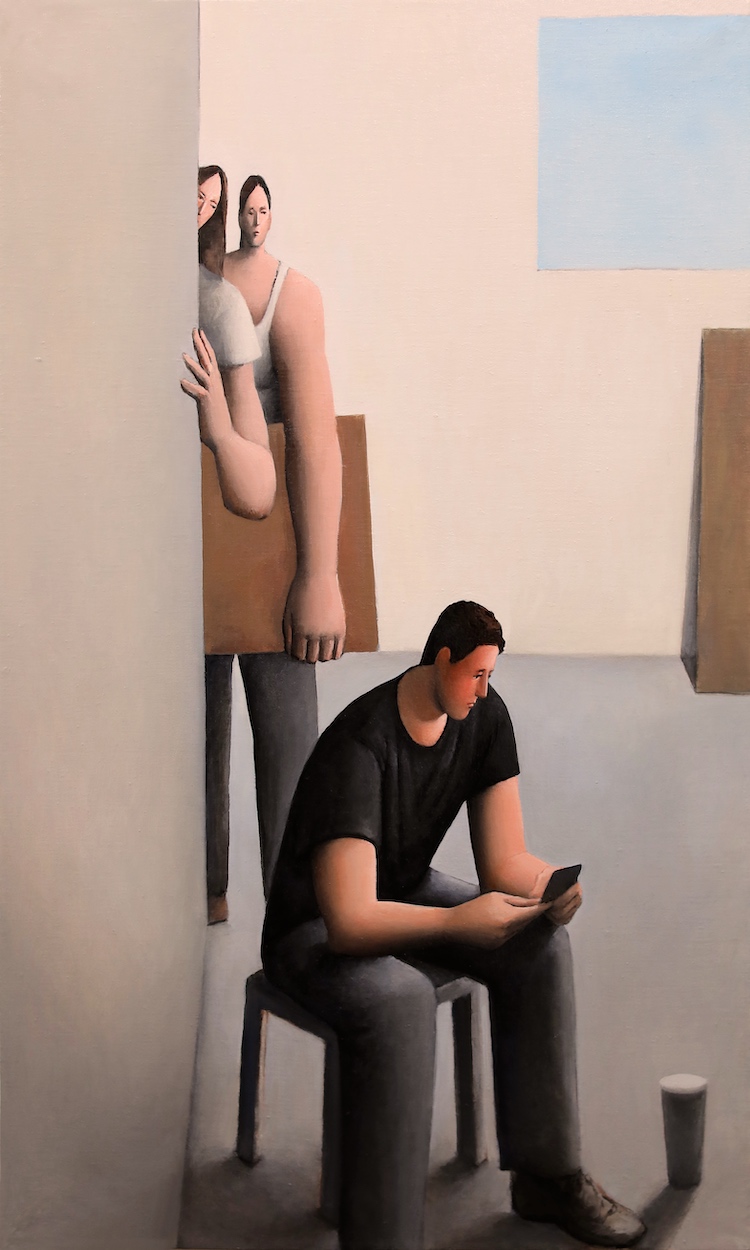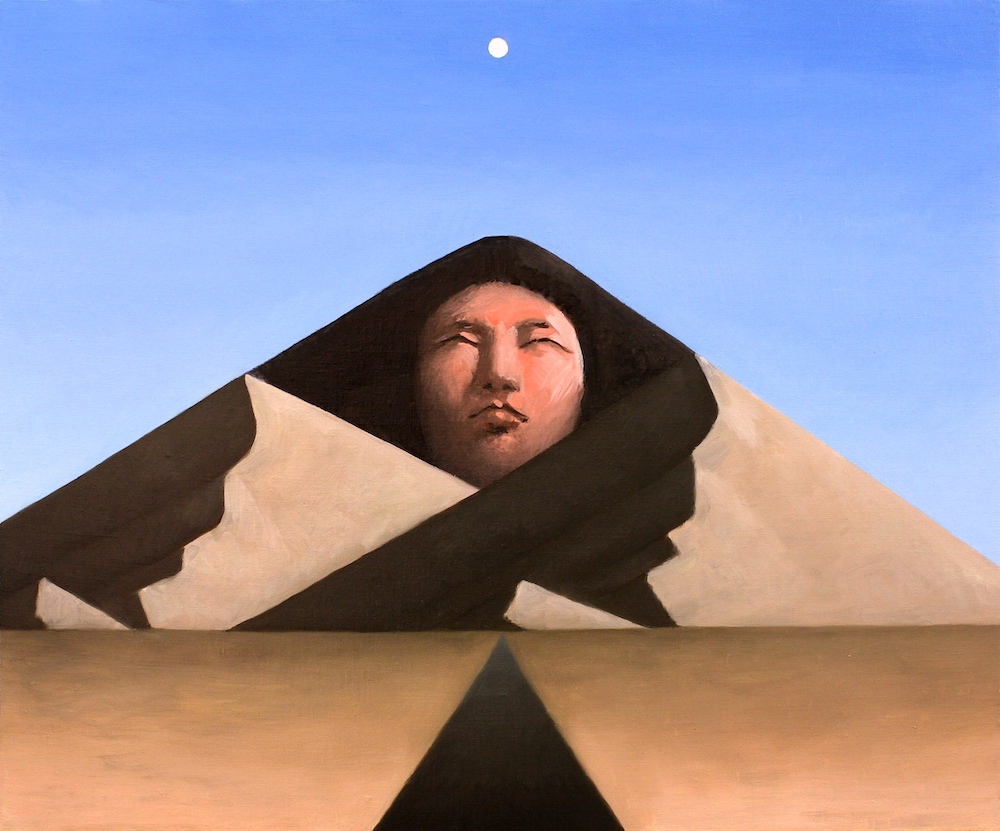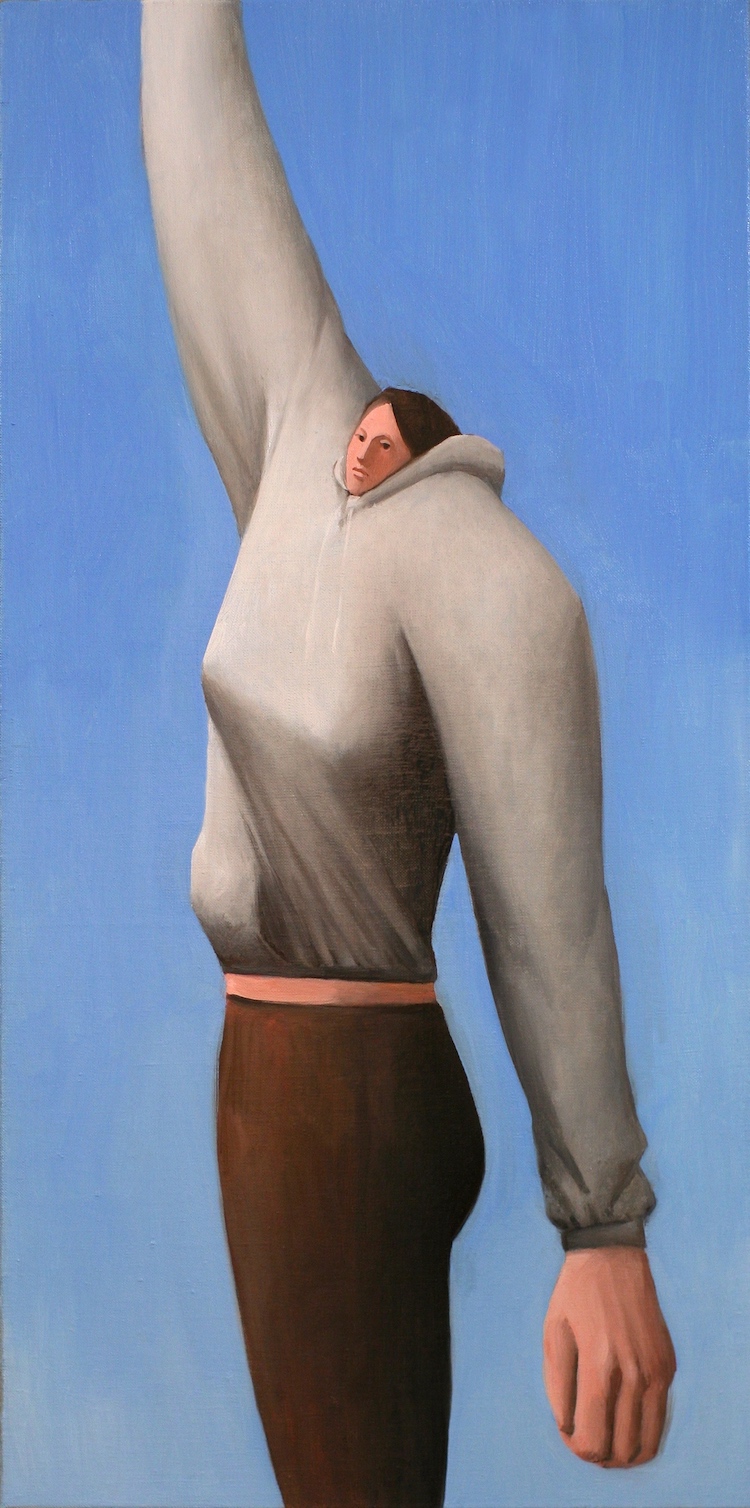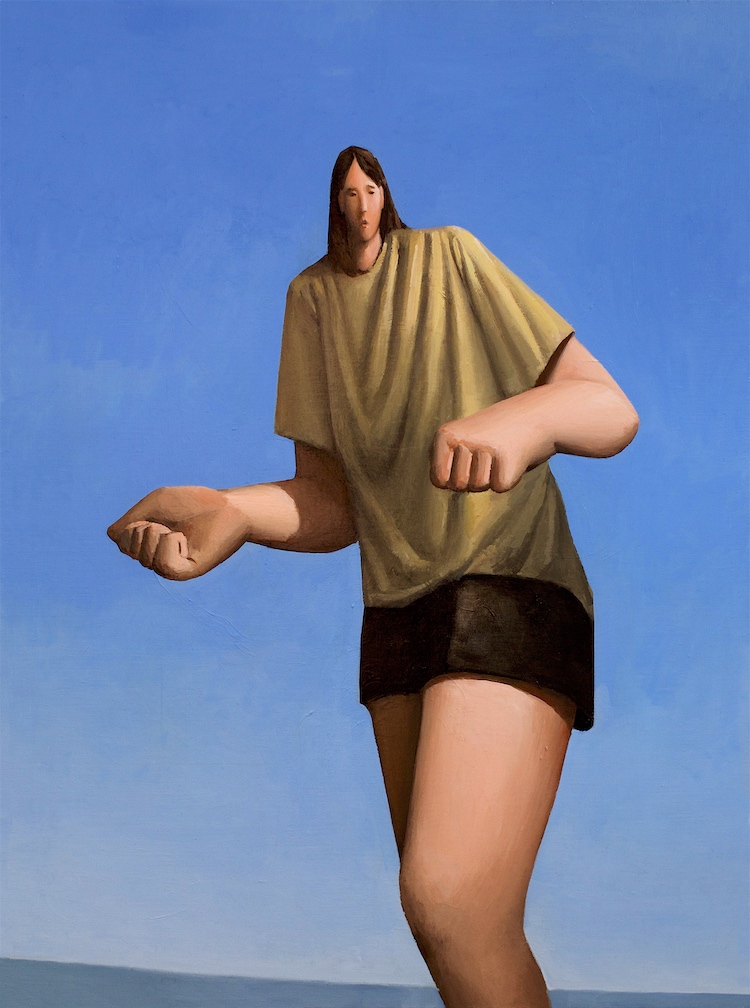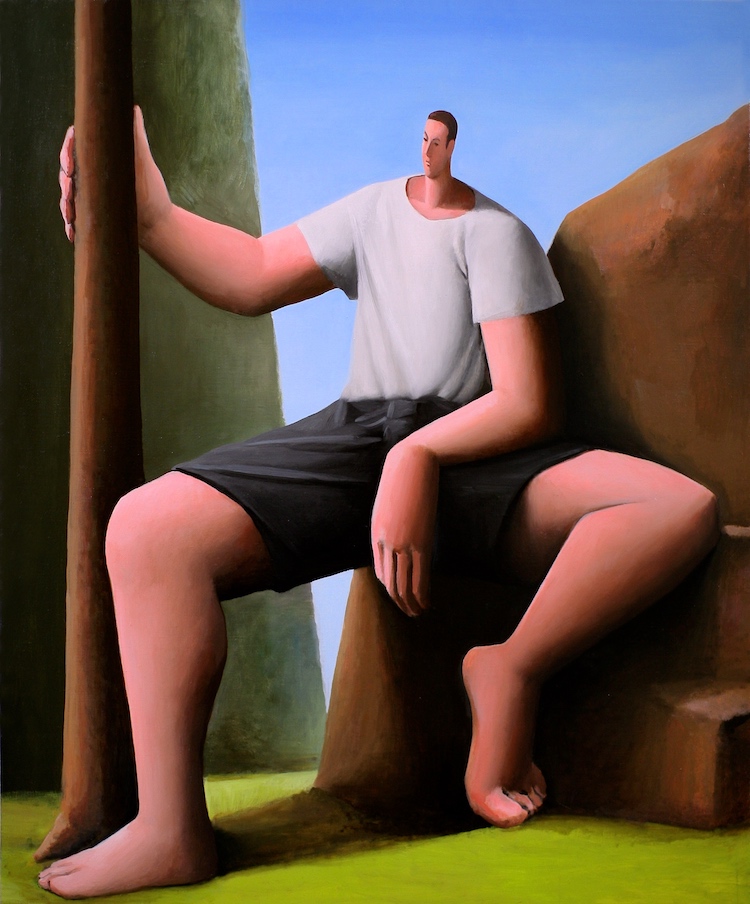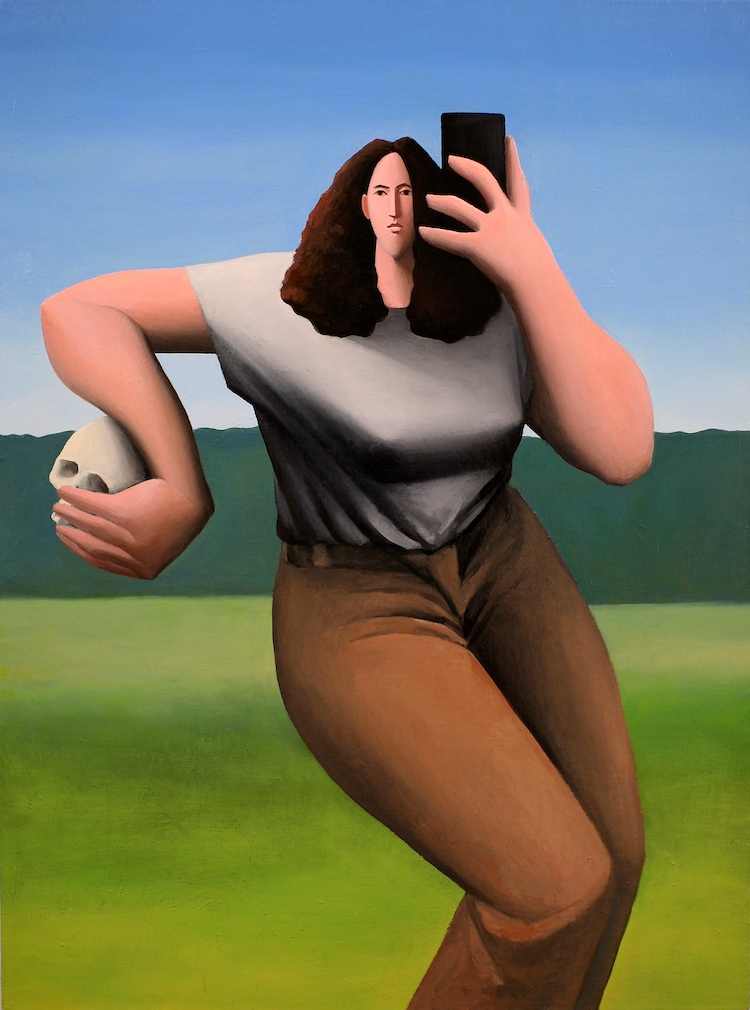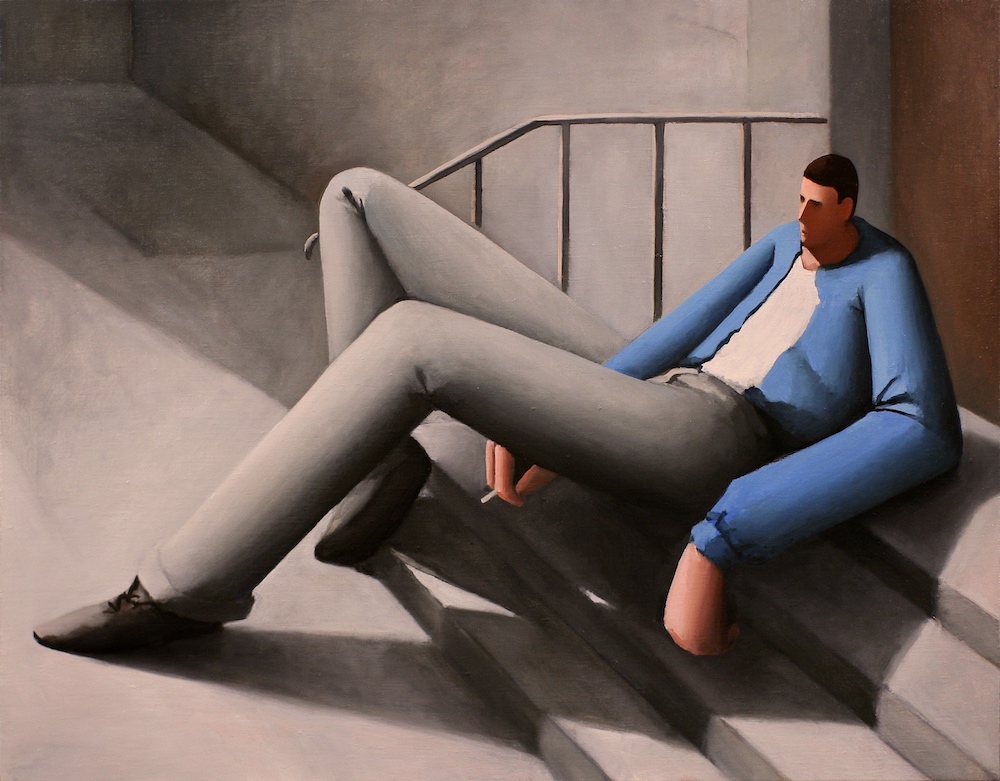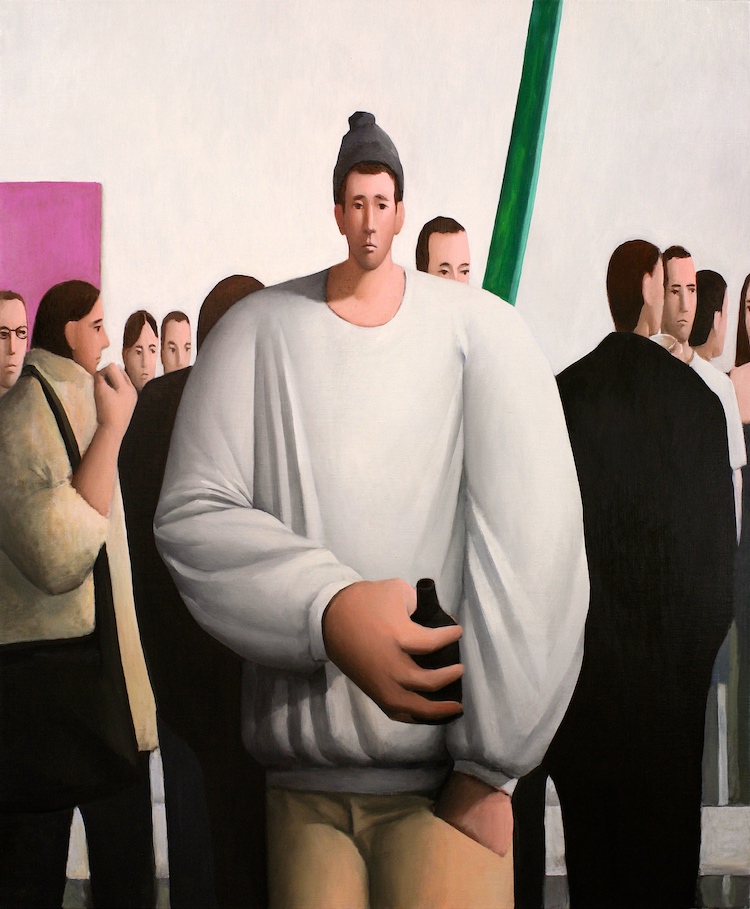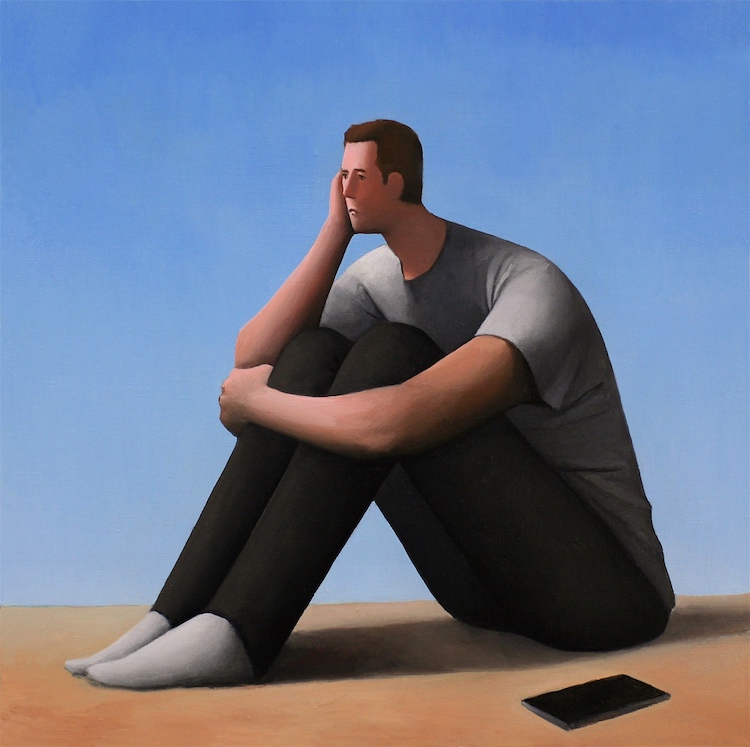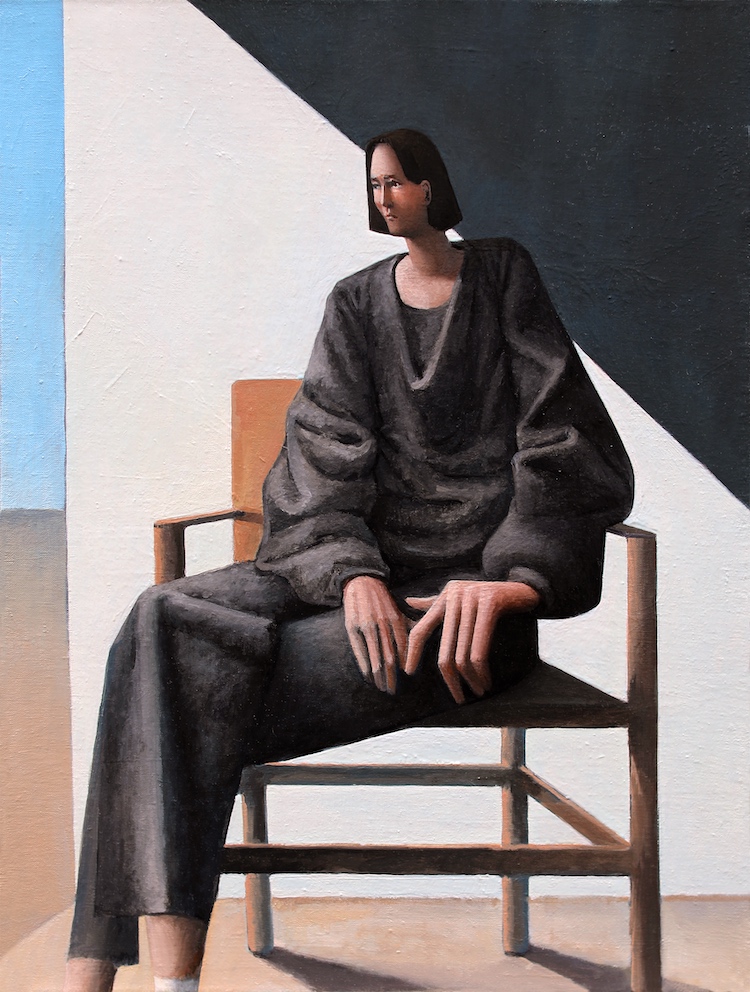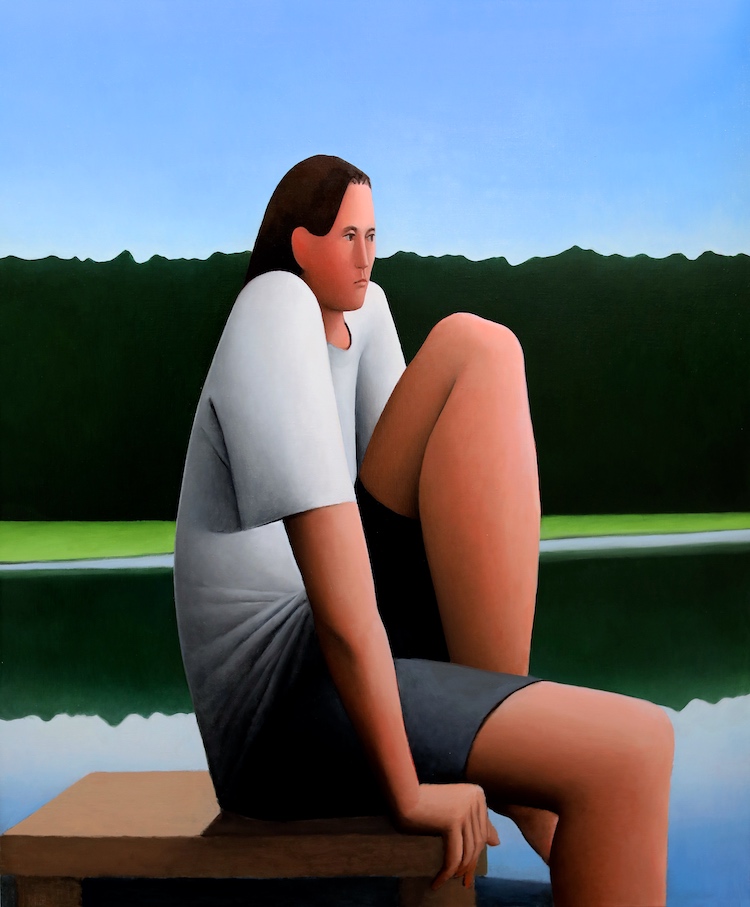“I need to put everything on hold for about a year,” Tony Toscani told me when we met at his Brooklyn studio early in 2020 and talked about life, art practice, and plans for the future. After cleaning the cyber dust from that conversation, put on hold like so many in 2020, we started looking back at Tony’s work and how his engrossed characters feel so relevant, his solitary “daydreamers” more relatable. Distanced from anyone in their proximity or captured alone at an unspecified location, their distractions consume them to the point of being subsumed by their bodies, heads literally lost in thought. While we did enjoy visiting their melancholic vibe back in the day, the images now resonate with a whole new level of touching intensity.
Sasha Bogojev: I want to start off with the limbs…
Tony Toscani: How they're exaggerated and such? Well, I think at first it was definitely not planned.
A serendipitous mistake?
It was kind of like a mistake, but more like a technical decision. I used to be way faster than I am now at painting. I slowed down a lot, but when I was really fast, I would kind of find an image and then work it out. I got really attracted by these tiny head figures because it really related to our current time where people are just kind of distracted a lot. They tend to be more distracted by phones or media or peer pressure, or try to fit into some social clique. So, people started using their awareness a lot less and their bodies a lot more because they still had to go on doing normal things in their everyday life, like going to the bathroom, eating, working, and sleeping. So, to me, it's kind of like the human evolution in 2000 years, what we would all end up looking like.
Yeah, I was going to call it an “alternative evolution.”
Right, and that's why they tend to look like giants, as well. So, when I was working with that fast technique, it started building on this quirk of exaggerated limbs and these tiny heads. Which was funny because, I didn't know, but a lot of people started emailing me and telling me that that's a syndrome that a lot of people actually had. They kind of are in a state where they see their limbs extend more than they actually are. It's called Alice in Wonderland syndrome. But I never knew this and I just recently found that out and it just came from my quirk of doing a fast technique that spiraled into a concept.
The characters seem to be fashioned in a simplified way in terms of the spaces and the outfits they're in. Is that on purpose?
I think I'm trying really hard not to be too detailed in the sense that this is a specific person, or a specific place. I don't want to say this is New York or this is America. It could be anywhere in the world and anybody. They are meant to look average.
What about the concept of time?
I don't think time really applies because it could be hundreds of years ago. Some things like a phone end up in an image, but I don't really put details into the phone, because I don't want it to be too stuck in a specific time. I don't want it to have an iPhone symbol or anything like that, but have it just be a black brick. Same with the coffee mugs and computers. I don't want to give people too many exact answers that they need to follow. I want them to have their own idea of what it could be. Whatever they can relate to, they can put it in that place, whether it is a book or something else.
And what type of emotion do you think of when you make the work?
Well, our current state of melancholy and apathy is my biggest influence. I actually call these guys the “Daydreamers.” They are kind of a metaphor for our society. How we see ourselves in real life. Not how we imagine ourselves, like through social media. In reality, we are all united by our melancholy.
Are you working from reference photos or do you have people model for your work?
I use myself as a model at times. They all kind of have my face a little bit. Even the women, since I am a Mediterranean-looking person who’s white or beige-ish. But that's only because I don't know how to paint figures that well. So I have to kind of look at myself and see how my shadows look and how my fingers look, what color I should use and whatnot. That's the reason why they look the way they do, because I don't look at any pictures, or print out any images or that kind of stuff. I have to use myself, look at myself in a mirror or something.
And when you compose them, when you put them in these positions, is it derived from any particular references?
No, most of the time I draw from my imagination, like a rough stick figure, and then it gets limbs, and it gets a head, and, once I rework that drawing over and over and over, then I transpose it onto a canvas. That canvas sometimes changes or it doesn't change. But, roughly, that is the kind of drawing I come up with in my head, because these aren't exactly fixed to places. They kind of have places; for example, this one reminds me a lot of where I grew up, with trees in the background behind a lake. And this is kind of like the gallery that I work at, but it's very rough. I try not to show any details. Even with windows, you just see a blue space. No bars or anything, mostly because I don't really have anything to reference. It's too difficult to try and be realistic. That is why I like them to be more of a representation of that thing rather than being realistic.
Apparently, for you, the process is as important as the result because you're constantly developing technique and developing yourself.
All the time. I feel like every painting has a slightly different technique.
Is that satisfying or does it get frustrating?
It's always frustrating. It's never exactly what I want it to be, but I have come to this agreement with myself that if it’s at least 70% or 80% of what I want, that’s enough for me. But it doesn't always work out that way. I used to make a painting every day, one painting a day because I was really fast. And now it takes me about a month just to finish one work.
Do you need a lot of focus when you work, and how does that work since you share the workspace with your wife, Adehla Lee?
With these works, I do. My wife and I figured out a way. It was really difficult at first, but we somehow manage. We actually met at grad school. We went to grad school in New York at SVA, the School of Visual Arts, and our studios were completely separate. Even though you were in a place with 10 other studios around you, no one really bothers you. So, in a way, we're kind of used to it now. And then when we moved in together, it was just hard because our studio was also our home, so we also had to figure out our eating situation, our cleaning situation and so on. But we have a rhythm down now and it works out perfectly.
It doesn’t sound like there are podcasts, reruns of shows or favorite movies in the background for you?
No, this is the most active it gets—my little ambient compositions and stuff. Adehla sometimes turns on podcasts, but not when she's really focused, it's more like when she's drawing or sketching out something. But when she's focused, it’s curtains closed, completely locked into the place, and at six o'clock—it’s dinner.
And do you collaborate? Not in a sense that you work together, but do you give suggestions to each other?
All the time. We talk about art all the time. Every day.
Does it get spicy?
At times, but in a good way. I feel like she's always been my best teacher. I always realized the parts of me that I have to fix, and her getting spicy or something like that is a perfect way of seeing what's wrong with my work, or what's wrong with how I see something. Because, when I first started painting, I was, in a way, very ignorant. I used to think, "Oh, I am the best artist. I can do this, I can do that, I can do whatever I want. It's a free-for-all.” But she was, like, "Are you really looking at your paintings? You have too much of that ego part.” And then I started realizing, "Oh wow, now I really know I know nothing." Because once I started realizing what she was saying, it started to compute, and then I took a step back and understood there was this ignorance that I was kind of trapped in.
So, I love her feedback—on everything! She's always been the best at that. And not only is she an amazing artist, she’s one of my favorite artists, so when it comes from a place of experience, it means a lot more to me—which is great, because, during every single meal, we talk about the stresses of art and how we can improve.
Turned out 2020 was a perfect year to take off. How did that work out for you?
Unfortunately, the tragic coincidence just happened to work out that way. It’s pretty ironic. I desperately needed time and I found myself having all the time in the world. It was definitely a year of mixed emotions and tragedy. I had all this spare time to work on improving my skills and make more work. But it was also a time when everything got harder, not just for me but for everyone. Just going grocery shopping felt like work. It definitely took a toll on my painting. I also changed my technique quite a bit since the old one was requiring me to pull all-nighters, which later snowballed into severe insomnia.
So the year seemed to be filled with tons of hard work and sleepless nights. It is kind of odd to say this now, but I feel like I am finally starting to get a handle on this new technique. But we will see.
This interview was originally published in the Spring 2021 Quarterly edition. Portrait by Sasha Bogojev

